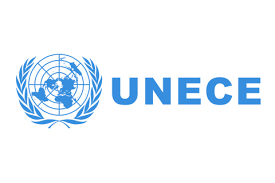The Convention on the Protection and Use of Transboundary Watercourses and International Lakes
The Water Convention requires Parties to prevent, control and reduce transboundary impact, use transboundary waters in a reasonable and equitable way and ensure their sustainable management. Parties bordering the same transboundary waters have to cooperate by entering into specific agreements and establishing joint bodies. As a framework agreement, the Convention does not replace bilateral and multilateral agreements for specific basins or aquifers; instead, it fosters their establishment and implementation, as well as further development.
The Convention on the Protection and Use of Transboundary Watercourses and International Lakes (Water Convention) is a unique international legal instrument and intergovernmental platform which aims to ensure the sustainable use of transboundary water resources by facilitating cooperation. Initially negotiated as a regional instrument, it has been opened up for accession to all UN Member States in 2016.

Item Assessment information
Needs addressed
- Developing strong governance and policies
Leaving no one behind
- Addressing SCP needs of the national population (including vulnerable groups)
Applicability
- Tested
- Implemented
- Evaluated Proof of Concept
- Applicable multiple countries
Organizations

-
12.1
-
12.2
-
12.a
How does the tool make an impact on SDG12?
The Convention contributes directly to 12.2, as it encourages sustainable water management. 12.4 could be also impacted as the Water Convention requires its parties to prevent, control and reduce transboundary impacts.
How does the tool make an impact across SDGs?
The Water Convention is a powerful tool to promote and operationalize the achievement of the 2030 Agenda for Sustainable Development and its SDGs. It directly supports implementation of target 6.5, which requests all countries to implement integrated water resources management, including through transboundary cooperation, as appropriate. The Convention and its programme of work are also relevant for other SDGs, such as all the other targets of goal, but also: goals 2, 7, 13, 15, 16, 17 and target 11.5.

How does the tool promote and/or make an impact on MEAs?
The convention can support Basel, Rotterdam and Stockholm Conventions to promote prevention and minimization of significant adverse effects on human health and the environment, including oceans and marine biodiversity